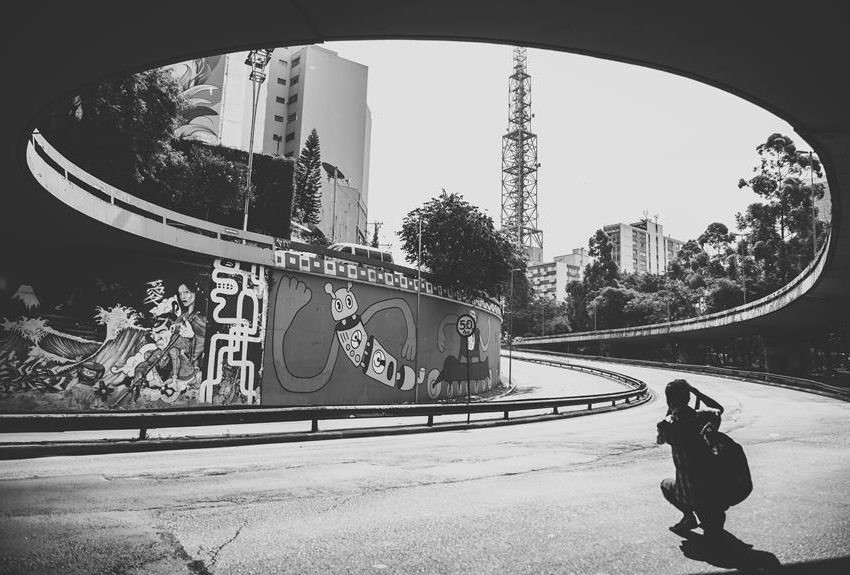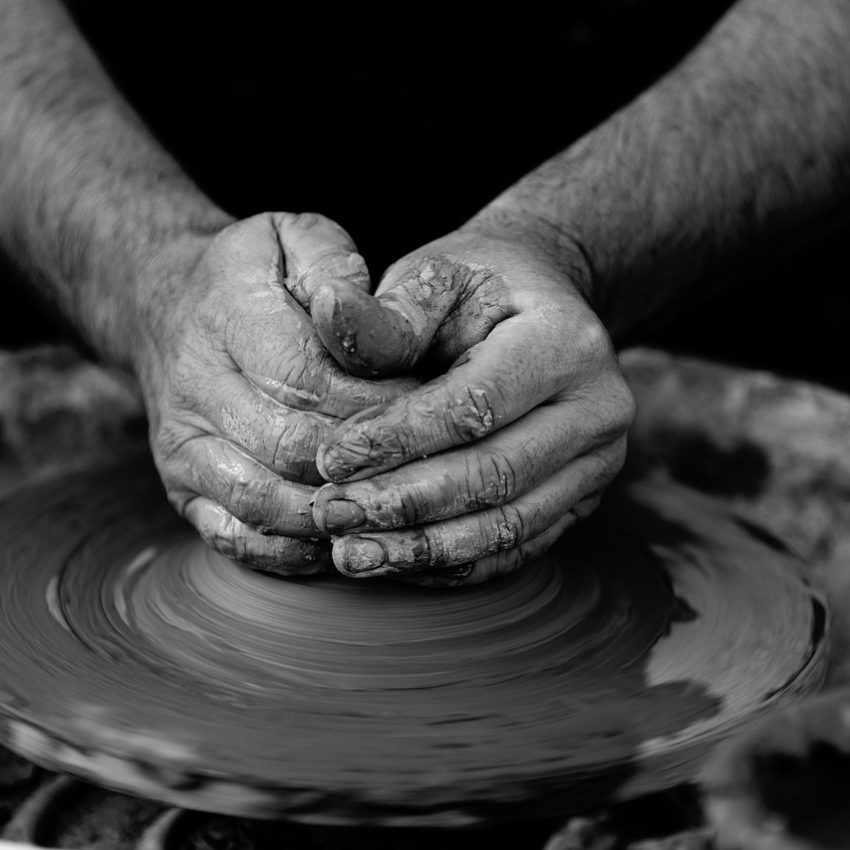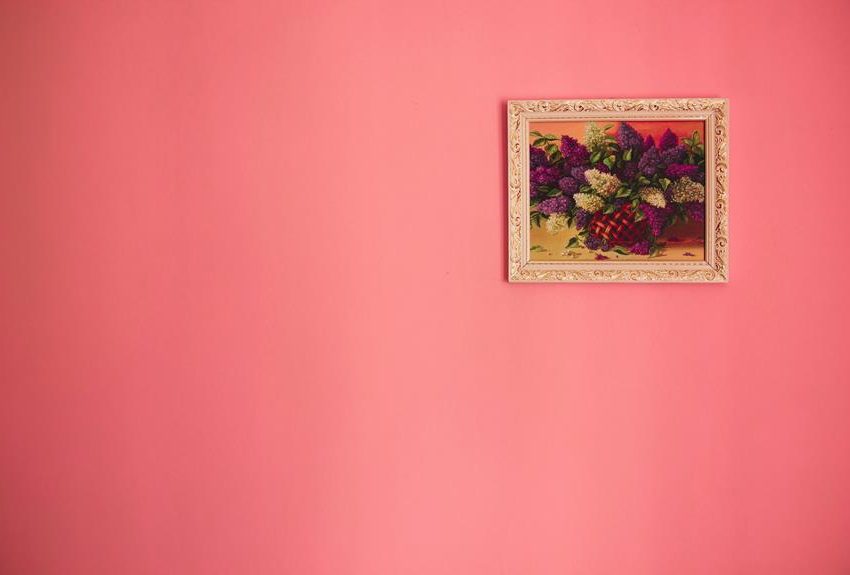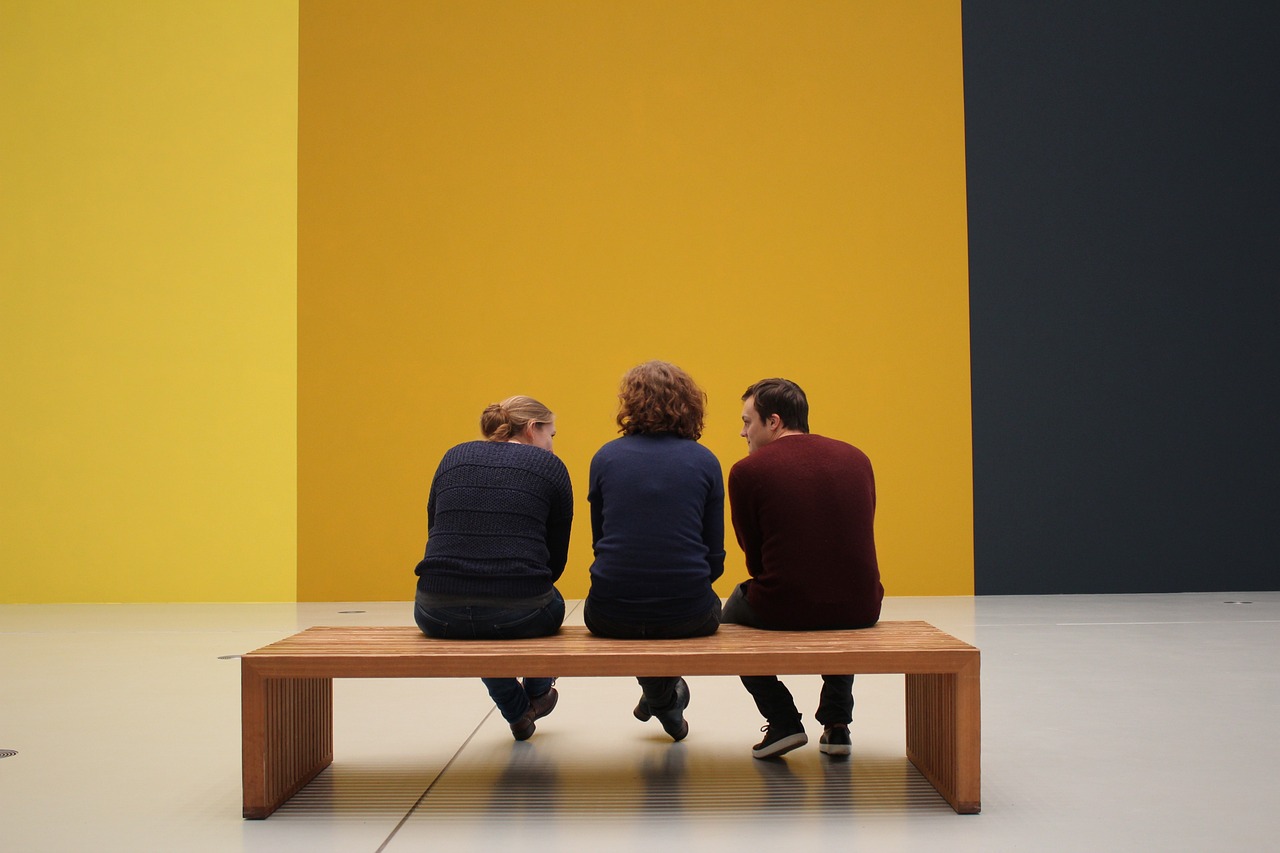Pablo Picasso : Les Demoiselles d'Avignon, 1907
Les Demoiselles d’Avignon, initially titled The Brothel of Avignon, represents a monumental oil painting by the Spanish virtuoso Pablo Picasso in 1907.
Gracing the halls of the Museum of Modern Art in New York, this masterpiece vividly captures the essence of five nude female prostitutes within the confines of a brothel along Carrer d’Avinyó, a vibrant street in Barcelona, Spain.
Picasso’s portrayal is far from conventional; the figures, with their angular and disjointed forms, emanate a confrontational energy, challenging conventional notions of femininity.
Each woman embodies a myriad of cultural influences: the figure on the far left bears facial features and attire reminiscent of Egypt or Southern Asia, while the adjacent pair adopts an Iberian style reflective of Picasso’s Spanish heritage.
In stark contrast, the remaining duo don African mask-like features, evoking a sense of ethnic primitivism that ignited Picasso’s artistic sensibilities, a crucial element behind Les Demoiselles’ breakthrough.
This fusion of tribal elements, coupled with Picasso’s deliberate departure from Renaissance norms of perspective and realism, converges in a compressed pictorial plane reminiscent of Baroque compositions.
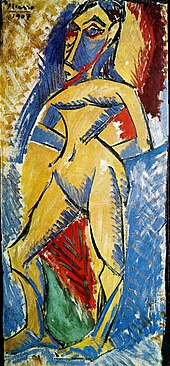
When Pablo Become Picasso
Picasso's Artistic Innovation
Picasso’s competitive spirit, driven by his desire to surpass his great rival, manifested itself vividly in the creation of Les Demoiselles d’Avignon, a painting that showcased his innovative use of African masks.
A comparison of canvases reveals the stark differences between Picasso’s masterpiece and Matisse’s tranquil landscapes.
Where Matisse’s scenes evoke a sense of languid sensuality, steeped in the mythic past of Greece’s golden age, Picasso’s canvas pulsates with a raw energy, devoid of classical reverie.
Testament to Audacity and Innovation
In essence, Les Demoiselles d’Avignon stands as a testament to Picasso’s audacity and innovation, a bold declaration of his artistic prowess and his willingness to challenge conventions.
Through his radical reimagining of space and subject matter, Picasso transcends the boundaries of classical art, firmly establishing himself as a pioneer of modernism.
Response to Rivalry and Influence
As Picasso embarked on the creation of Les Demoiselles d’Avignon, he was propelled by a fierce determination to stake his claim in the pantheon of modern art, bringing African art into the dialogue with Western traditions.
The painting, with its audacious departure from convention and its bold reimagining of form and space, stands as a testament to Picasso’s unyielding ego and relentless pursuit of artistic innovation.
In the crucible of Cézanne’s legacy, amidst the praise for Matisse’s triumph, Picasso found the catalyst for his own artistic breakthrough.
Les Demoiselles d’Avignon would not only signal the emergence of a new paradigm in art but also serve as a declaration of Picasso’s singular genius and indomitable spirit, establishing it as a pivotal painting in Picasso’s studio.
Bold Departure from Tradition
In Les Demoiselles d’Avignon, Picasso boldly compresses space, creating an interior realm that feels closed off and almost suffocatingly intimate, significantly inspired by African art.
Unlike the flowing arabesques of Matisse’s forms, Picasso’s figures exude a kind of aggressive crudeness, devoid of sensual eroticism, showcasing the divergent paths taken by these contemporaries in the early 20th century.
These are not idealized goddesses of ancient myth, but rather flesh-and-blood women from the red-light district of Barcelona, a milieu with which Picasso was intimately familiar, having frequented the streets of Avignon himself.
Unlike the flowing arabesques of Matisse’s forms, Picasso’s figures exude a kind of aggressive crudeness, devoid of sensual eroticism, a stark departure from Matisse’s Le Bonheur de Vivre, showcasing the divergent paths taken by these contemporaries in the early 20th century.
The inclusion of details such as the squatting figure at the lower right accentuates this departure, plunging the viewer into a world of gritty realism.
These are not idealized goddesses of ancient myth, but rather flesh-and-blood women from the red-light district of Barcelona, a milieu with which Picasso was intimately familiar, having frequented the streets of Avignon himself.
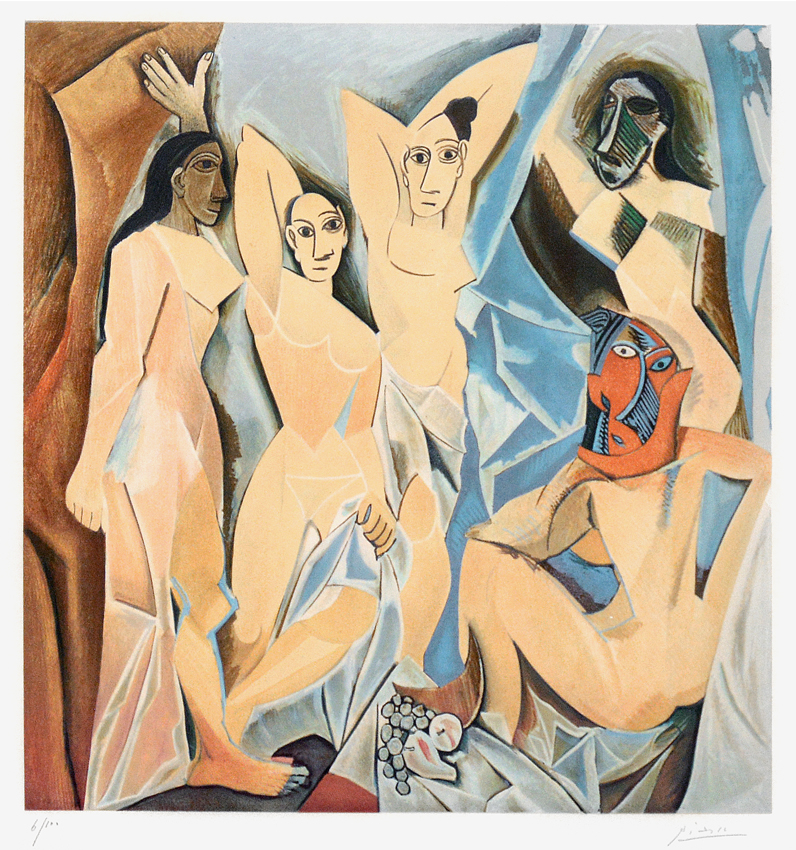
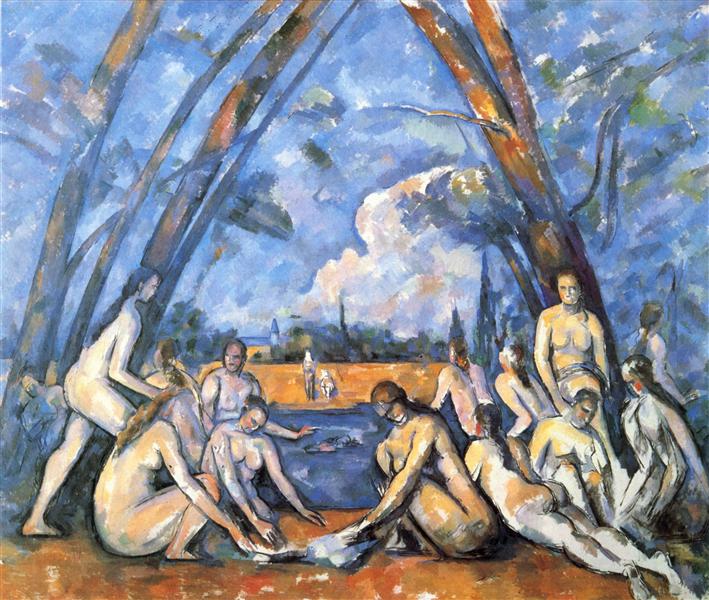
Encounter with Cézanne's Legacy
Cézanne’s legacy loomed large over the burgeoning art scene of the early 20th century, casting a spectral influence that would shape the works of Picasso, Matisse, and countless other artists.
For Picasso, this influence was palpable during his encounter with Cézanne’s monumental masterpiece, The Large Bathers, showcased at a retrospective in Paris following the artist’s passing in 1906.
The retrospective served as a crucible for Picasso, Matisse, and their contemporaries, compelling them to grapple with the profound implications of Cézanne’s revolutionary approach to form and composition.
Matisse’s response to this challenge materialized in his masterpiece, Bonheur de Vivre, completed in 1906. The painting, with its vibrant colors and harmonious figures, epitomized the promise of Cézanne’s artistic vision, earning accolades from the avant-garde circles of Paris.
Purchased by patrons Leo and Gertrude Stein, Bonheur de Vivre became a focal point in their salon, where it garnered praise and admiration from luminaries of the art world.
Yet, for Picasso, Matisse’s success was a gauntlet thrown down—a challenge to his own artistic ambitions and ego, as he worked on the demoiselles d’Avignon is a painting that reflected his answer to this rivalry.
The realization that Matisse had seemingly mastered Cézanne’s lessons, incorporating influences from Seurat and van Gogh, fueled Picasso’s competitive drive. It was a moment of reckoning, a confrontation with his own artistic insecurities and aspirations.
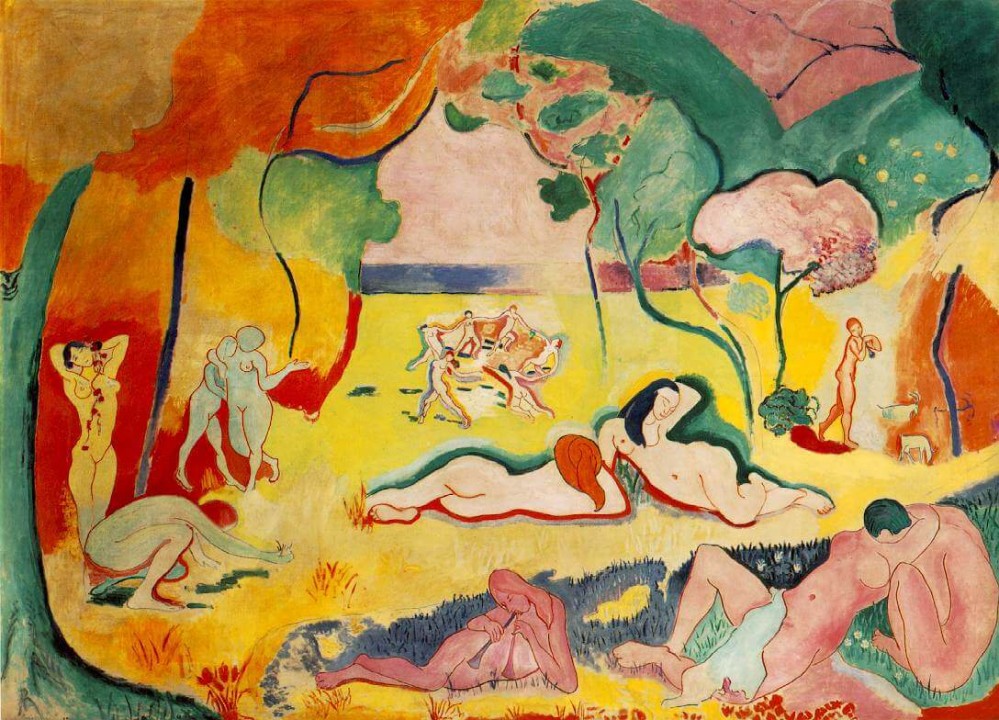
Pablo Picasso & Les Demoiselles d'Avignon Influences
Picasso meticulously prepared for the creation of Les Demoiselles d’Avignon through numerous sketches and studies. While he acknowledged the significance of Spanish art and Iberian sculpture in shaping his work, critics have long speculated about additional influences.
Though Picasso denied any direct connection to African tribal masks and Oceanic art, many art historians remain skeptical of his claims.
In October 1906, Picasso closely examined a Teke figure from Congo owned by Matisse, and that very evening, he began his initial studies for the painting.
Some experts suggest that Pablo Picasso visited the Musée d’Ethnographie du Trocadéro in the spring of 1907, drawing inspiration from African and other arts shortly before completing Les Demoiselles d’Avignon by Pablo Picasso.
Initially drawn to the museum to study medieval sculptures, Picasso also found inspiration in examples of “primitive” art.
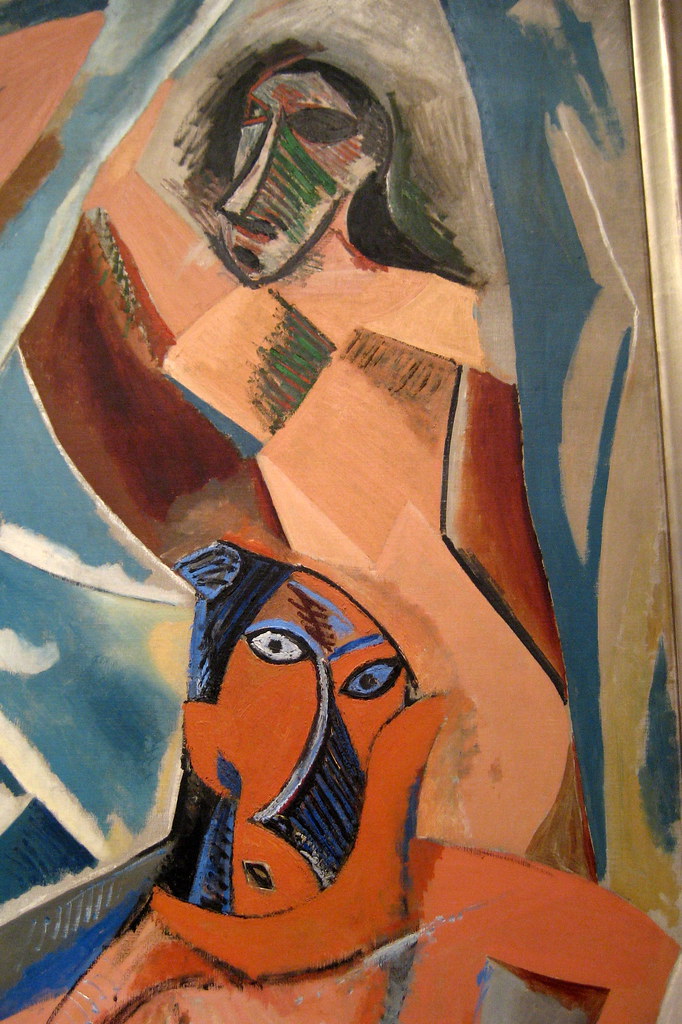
El Greco
When Picasso embarked on Les Demoiselles in 1907, he admired the work of El Greco, a painter largely overlooked at the time.
Picasso’s friend Ignacio Zuloaga acquired El Greco’s masterpiece, The Opening of the Fifth Seal, in 1897.
The stylistic similarities and thematic connections between El Greco’s work and Les Demoiselles were noted in the early 1980s.
Picasso found inspiration in The Opening of the Fifth Seal, which he studied repeatedly in Zuloaga’s house.
The painting influenced not only the size, format, and composition of Les Demoiselles but also its apocalyptic power.
Picasso later asserted that Cubism had Spanish origins, citing influences from Cézanne and the Venetian painter El Greco.
The relationship between Les Demoiselles d’Avignon by Pablo Picasso and other group portraits in the Western tradition, such as Diana and Callisto by Titian and works by Rubens, has also been explored, revealing the profound impact behind Les Demoiselles.
Conclusion
Picasso’s Artistic Evolution
In the aftermath of “Les Demoiselles,” Picasso’s ascent to artistic preeminence was indisputable, marking a new epoch in Modern art. Picasso’s methodology echoes Velazquez’s confrontational stance in “Las Meninas,” positioning him as a trailblazer in the avant-garde movement, surpassing even Henri Matisse. John Richardson argues that “Les Demoiselles” propelled Picasso to the forefront of Western painting, akin to the impact of Giotto in previous eras. Moreover, it laid the foundation for Picasso and Georges Braque’s revolutionary journey into Cubism, a seismic shift that resonated throughout the 20th-century art landscape.
Controversy and Response
However, this groundbreaking piece was not devoid of controversy; its revolutionary nature stirred widespread discord, even among Picasso’s inner circle. Henri Matisse initially dismissed it as a jest, though indirectly responded through his work, “Bathers with a Turtle.” Similarly, Georges Braque, while initially critical, became enthralled upon closer examination, catalyzing a partnership with Picasso that would redefine painting and sculpture conventions.
Enduring Impact
“Les Demoiselles” echoes through art history, drawing parallels to the works of Cézanne, Gauguin, and El Greco. Despite facing moral outrage at its 1916 exhibition, initially dubbed “Le Bordel d’Avignon,” Picasso persisted in pushing boundaries, advocating for a more irreverent title, “Las chicas de Avignon.”
Picasso’s Breakthrough
Picasso’s departure from the classical period, influenced by Iberian art and the style of 1906, led some art historians to explore the beginnings of Cubism in his art. Inspired by encounters with African and Oceanic art, Picasso introduced masks that we know he was then looking at in his laboratory. Picasso’s painting creates the illusion that transcends painting itself, challenging artists who saw this painting to think about art without the hindsight of tradition, embodying a revolution that would ripple through art in New York City and beyond.
Exhibition and Exploration
Despite the initial skepticism and problems surrounding this painting, it mounted an important Picasso exhibition, showcasing the bold ideas behind the work. Picasso’s innovative approach, combined with his years of artistic exploration, solidified his status as an important figure in the history of art, inspiring future generations of artists and scholars to delve deeper into his revolutionary work.

